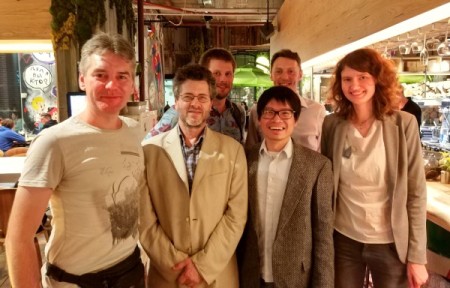The 3rd Workshop on Advanced Methodologies for Bayesian Networks was run in Kyoto September 20-22, 2017. The workshop was well organised, and the talks were great. Really good invited talks by great speakers!
I’ll be talking about our (with François Petitjean, Nayyar Zaidi and Geoff Webb) recent work with Bayesian Network Classifiers:
Backoff methods for estimating parameters of a Bayesian network
Various authors have highlighted inadequacies of BDeu type scores and this problem is shared in parameter estimation. Basically, Laplace estimates work poorly, at least because setting the prior concentration is challenging. In 1997, Freidman et al suggested a simple backoff approach for Bayesian network classifiers (BNCs). Backoff methods dominate in in n-gram language models, with modified Kneser-Ney smoothing, being the best known, and a Bayesian variant exists in the form of Pitman-Yor process language models from Teh in 2006. In this talk we will present some results on using backoff methods for Bayes network classifiers and Bayesian networks generally. For BNCs at least, the improvements are dramatic and alleviate some of the issues of choosing too dense a network.
Slides are at the AMBN site, here. Note I spent a bit of time embellishing my slides with some fabulous historical Japanese artwork!
Software for the system is built on the amazing Chordalysis system of François Petitjean, and the code is available as HierarchicalDirichletProcessEstimation. Boy, Nayyar and François really can do good empirical work!

